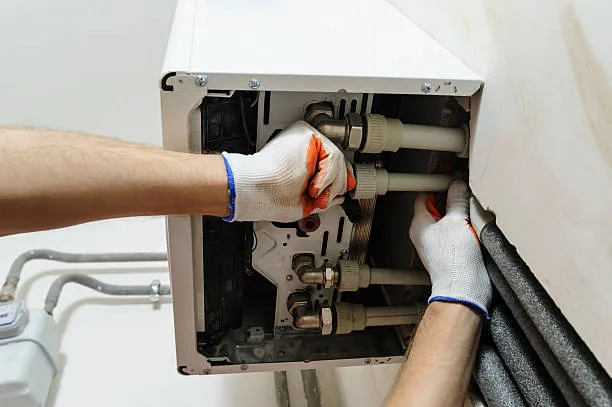Heating Installation in Represa, CA
Heating installation in Represa, CA deserves a practical, locally informed approach. Represa homes face warm days and cool, damp winter nights — not extreme Arctic cold, but enough temperature swings that an efficient, properly sized heating system matters for comfort, indoor air quality, and energy bills. Whether you are replacing an aging furnace, switching to a heat pump, or adding ductless mini splits for zone control, this page explains the selection, installation process, testing, and ongoing care you should expect from a professional heating install.
Why professional heating installation matters in Represa, CA
- Milder winters mean heat pumps and hybrid systems often deliver the best year-round efficiency versus high-AFUE gas furnaces.
- Many homes in the area have mixed construction and older ductwork; improper sizing or installation increases draft, noise, and energy waste.
- Local humidity and occasional cold snaps make proper airflow, insulation checks, and system controls important for comfort without overspending on fuel.
Common heating options and which Represa homes suit them
- Central Furnaces (gas or electric): Best for homes with existing ductwork and where higher instantaneous heat is preferred. Look for high AFUE ratings for efficiency.
- Heat Pumps (air-source or variable-speed): Excellent for Represa’s climate — they provide both heating and cooling with strong year-round efficiency. Compare HSPF and SEER ratings when choosing a model.
- Hybrid systems: Combine a heat pump with a gas furnace to switch to gas only during the coldest periods. Good for homes wanting maximum comfort with energy optimization.
- Ductless mini split systems: Ideal for additions, older homes without ducts, or rooms needing separate temperature control. They are energy-efficient and cause minimal disruption during installation.
- Zoned systems & smart thermostats: For many local homes, zoning reduces energy use by only heating occupied spaces.
How we select and size your system
Proper sizing is the foundation of a reliable install. A professional installation includes:
- A detailed heat load calculation (Manual J or equivalent) that considers square footage, orientation, insulation, window type, and local climate patterns in Represa.
- Assessment of existing ductwork or decisions around new duct runs or mini split placement.
- Matching the system’s capacity to your home’s calculated needs, not simply replacing “like-for-like” tonnage. Oversized equipment cycles frequently and wastes energy; undersized equipment struggles during cold nights.
Installation process: what to expect
- Site evaluation and safety prep: Technicians evaluate clearances, combustion air for gas units, electrical capacity, and COVID-19 safety steps while on site.
- Removal of old equipment: Safely decommission existing units and handle refrigerant or fuel lines per regulations.
- Ductwork or mini split preparation:
- For ducted systems: inspect, repair, and seal ducts; add insulation as needed; install new plenums or returns for balance.
- For ductless systems: determine indoor head locations for optimal airflow and minimal visual impact; run condensate and refrigerant lines with minimal structural intrusion.
- Equipment installation: Set and level outdoor units, mount indoor equipment, connect gas, refrigerant, and electrical systems following manufacturer specifications.
- Controls and thermostat setup: Install smart or programmable thermostats, configure zoning, and integrate with existing home systems if required.
- Safety checks: For combustion systems, verify venting, flame characteristics, and carbon monoxide risk. For heat pumps, ensure proper refrigerant charge and compressor protection.
Testing, commissioning, and quality assurance
A thorough commissioning procedure ensures long-term performance:
- Measure airflow and static pressure to confirm ductwork and blower settings are correct.
- Verify refrigerant charge and superheat/subcooling on heat pumps.
- Confirm HVAC electrical connections, amperage draw, and proper sequencing.
- Test safety controls, flame sensors, limit switches, and CO detectors for gas systems.
- Balance zones and fine-tune thermostat settings. Technicians should provide a commissioning report documenting settings and measurements.
Energy-efficiency and operating benefits for Represa homes
- Properly installed heat pumps typically reduce heating costs compared with older electric or inefficient gas systems, particularly in Represa’s moderate winter temperatures.
- High-efficiency furnaces (high AFUE) and variable-speed blowers deliver quieter operation, better humidity control, and lower monthly energy bills.
- Zoned systems and ductless heads minimize wasted energy in rarely used rooms, a common source of inefficiency in local homes.
- Well-sealed and insulated ductwork reduces heat loss — a simple upgrade that pays back quickly in milder climates.
Ductwork, indoor air quality, and minisplit considerations
- Older or leaky duct systems are common in the region; sealing, insulating, and adding returns can greatly improve comfort.
- Ductless systems avoid duct losses but require careful placement to avoid cold spots and ensure even distribution.
- Consider upgrading filters, adding UV or whole-house filtration, and maintaining humidity control to address local dust and seasonal allergens.
Post-installation support and maintenance
After installation, reliable post-installation care preserves system life and efficiency:
- New system orientation: homeowners should receive clear instructions on thermostat programming, filter replacement, and seasonal tips.
- Recommended maintenance: annual heat pump or furnace tune-ups, filter checks every 1–3 months depending on usage, and periodic duct inspections.
- Warranties and documentation: expect manufacturer warranty registration details, serial numbers, and the commissioning report to be provided.
- Emergency preparedness: technicians should confirm safe operation of combustion appliances and recommend CO detectors where applicable.
Troubleshooting common issues soon after installation
- Uneven temperatures: often duct balancing, head placement, or thermostat setup.
- Short cycling: typically incorrect sizing or airflow restrictions.
- Higher-than-expected bills: poor insulation, unsealed ducts, or improper system configuration.All of these are resolved through targeted adjustments during the commissioning phase and follow-up maintenance.
Heating installation in Represa, CA is not just about swapping equipment; it is a system-level solution tailored to local climate, home construction, and family comfort patterns. Proper selection, precise sizing, disciplined installation, and transparent commissioning create dependable heating that keeps your home comfortable while optimizing efficiency for Represa’s seasonal needs.
Other Services
Customer Testimonials
See what our satisfied customers have to say about their experience with Always Affordable
Plumbing & HVAC.






